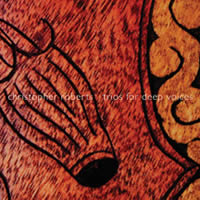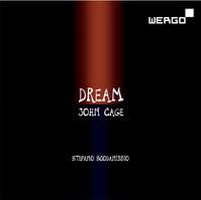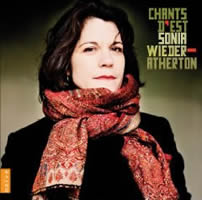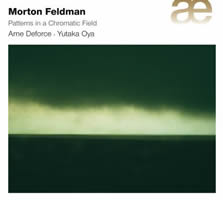String Theory 2: Violoncellos and Basses with Support
|
Grant Chu Covell [March 2010.]
“A roaring flame.” Oliver KNUSSEN: Turba (1971). Diana BURRELL: Songs for Harvey (1988). Roger REDGATE: ruins true refuge (2003). Robert KEELEY: Refacings (1999). Nicholas MAW: The Old King’s Lament (1981). Christopher FOX: Generic Composition #5 (1999-2000) with Generic Composition #8 (2001)**. Michael FINNISSY: Sepevi (1982-83). Bernard RANDS: Memo 1 (1972). James DILLON: A roaring flame (1982)*. Corrado Canonici (cbs), Sarah Leonard* (sop), Anton Lukoszevieze** (vlc). NMC D079 (http://www.nmcrec.co.uk/). Distributed in the US by Qualiton (http://www.qualiton.com/). Canonici produces vivid playing, a wonder to behold. However, these modernist solos with their brutal snap pizzicatos, soaring harmonics, low growling and frenetic tremolos tend to blur together. Burrell’s piece pops out because it’s more lyrical than the Knussen and Redgate. But then again, its title, incorporating “songs,” does give the game away. Maw’s The Old King’s Lament contemplates lines from Lear. Fox’s two indeterminate compositions are played concurrently by bass (#5) and cello (#8), the latter using a special bow which can play all four strings simultaneously. Rands’ Memo 1 amplifies the instrument and reminds us of its jazz lineage. Dillon’s title piece incorporates a soprano weaving through texts in Gaelic and Provençal about love and marriage.
“Trios for Deep Voices.” Christopher ROBERTS: Var. comps. Christopher Roberts, Mark Morton, James Bergman (cbs). Cold Blue Music CB0030 (http://www.coldbluemusic.com/). What may be lacking in surgical precision is compensated for by heaps of joy in these five trios for three double basses. Roberts visited Papua New Guinea in 1981 to experience its sounds and wonders, hiking through the jungle with a double bass — apparently the instrument Jack Lemmon carried as he eluded gangsters in Some Like It Hot. Be that as it may, these pieces reflect the spirit of Roberts’ travels. The instruments imitate birds in Hornbills and take to the air in Flying. This isn’t just a quaint postcard collection: Roberts has found his music.
“Dream.” John CAGE: Concert for Piano and Orchestra (1957-58); Freeman Etudes (1977-1980, arr. Stefano Scodanibbio); Dream (1948, arr. Scodanibbio); Ryoanji (1985); Radio Music (1956). Fabrizio Ottaviucci (pno), Mike Svoboda (trb), Manuel Zurria (fl), Aldo Campagnari (vln), Giorgio Casati (vlc), Dario Calderone (cbs), Nextime Ensemble: Biagio Zoli, Paolo Pasqualin, Paolo Murena (perc), Scodanibbio (cbs, cond.). Wergo WER 6713-2 (http://www.wergo.de/). Distributed in the US by Harmonia Mundi (http://www.harmoniamundi.com/). Dream is one of Cage’s earliest piano works, melodic and simple like a page from Satie, one of Cage’s then favorites. Scodanibbio’s arrangement puts low pedal tones in the bass while the piano gently ambles above. It is hard to imagine Cage writing something so delicate and captivating. Indeed, the other pieces suggest that Cage spent most of his artistic life assembling music as remote from the tuneful as possible. Famous for its graphical pages, Concert splatters notes and noise across 15-1/2 minutes, imitating life’s randomness. Scodanibbio and his team perform without irony or self-consciousness. Originally for violin, the nearly impossible Freeman Etudes arrange most every possible playable chord rather like a haphazard catalog in which every item appears but once. Scodanibbio’s execution of the first five Etudes is stunning. Would that he completes the remaining 27! Inspired by a rock garden in Kyoto, Ryoanji depends upon how many of its parts are played. Here we hear multiple Scodanibbios and percussion. Cage declared Scodanibbio’s eerie placement of anthropomorphic glissandos and bell tones among the best Ryoanji he’d ever heard. The strange sighing represents garden stones, and the multi-tracked basses create microtonal and dissonant fields. Radio Music constitutes desert, five performers pulling in random Italian radio broadcasts (Macerata, Italy, on February 23, 2005).
“Chants d’Est.” Serge RACHMANINOV: Nunc dimittis from Vespers, Op. 37 (1915, arr. V. Polonsky). Ernö DOHNÁNYI: Ruralia Hungarica, Op. 32b (1924, orch. F. Krawczyk). Alexander TCHEREPNIN: Tatar Dance from Songs and Dances, Op. 84 (1953, orch. F. Krawczyk). Franck KRAWCZYK: Jeux d’enfants, after Janáček’s Moravian Folksongs (2007). Sergey PROKOFIEV: The field of the dead from Alexander Nevsky (1938). Bohuslav MARTINŮ: Variations on a Slovak folksong (1959, arr. J. Teml). Gustav MAHLER: Ich bin der Welt abhanden gekommen from Rückert-Lieder (1901-02). Jewish traditional: Song in remembrance of Schubert; Dance. Sonia Wieder-Atherton (vlc), Sinfonia Varsovia, Christophe Mangou (cond.). Naïve V 5178 (http://www.naiveclassique.com/). Distributed in the US by Naxos (http://www.naxos.com/). Wieder-Atherton hovers angelically throughout this bittersweet collection of arrangements and chosen moments, chronicling a thin slice of nationalism and homesickness “from Russia to Mitteleuropa.” Krawczyk’s Jeux d’enfants assembles several of Janáček’s Moravian Folksongs. The Mahler song hits home, perhaps because it’s familiar, perhaps because the orchestration is sublime, or perhaps because the transition from vocalist to cello isn’t as unexpected as the other arrangements have been.
Morton FELDMAN: Patterns in a chromatic field (1981)*; Projection I (1950); Composition – 8 little pieces (1950)*; Intersection IV (1951); Duration II (1960)*. Arne Deforce (vlc), Yutaka Oya* (pno). Aeon AECD 0977 (2CDs) (http://www.aeon.fr/). Distributed in the US by Allegro Music (http://www.allegro-music.com/). Feldman waxed both short and long. He could provide the merest scaffold or precise notation. To my ear, the longer, precisely notated pieces offer more value than the graphic works. Aeon starts with the large cello and piano work, also known as Untitled Composition, which occupies the first disc and most of the second (51:10 + 36:54; disc 2 intentionally repeats the last 0:49 of disc 1). The music unfolds with varying tension which I hadn’t expected and don’t recall noticing in other recordings. It’s as if the players intend the busier sections to sound like a grand sonata but also want to earn the bonus miles from the languorous passages. Projection I is Feldman’s first, perhaps the all-time first, graph-paper piece. The composer specified time values, dynamics, and high, medium or low for pitch ranges only. It seems Deforce and Oya provide the first recording of the eight little pieces for cello and piano. For whatever reason, perhaps knowing Feldman’s own preferences, these short pieces call Webern to mind.
A Tcherepnin, Burrell, C Fox, C Roberts, Cage, Dillon, Dohnanyi, Feldman, Finnissy, Keeley, Knussen, Krawczyk, Mahler, Martinů, Maw, Prokofiev, Rachmaninov, Rands, Redgate
[More Grant Chu Covell, String Theory]
[More
A Tcherepnin, Burrell, C Fox, C Roberts, Cage, Dillon, Dohnanyi, Feldman, Finnissy, Keeley, Knussen, Krawczyk, Mahler, Martinů, Maw, Prokofiev, Rachmaninov, Rands, Redgate]
[Previous Article:
Album Tweets 8.]
[Next Article:
Qualche tedeschi, qualche gaijin]
|




